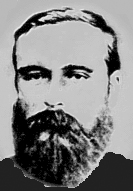James Taylor (planter) facts for kids
Quick facts for kids
James Taylor
|
|
|---|---|

James Taylor in Kandy, Sri Lanka in 1860s
|
|
| Born |
James Taylor
29 March 1835 Mosspark, Auchenblae, Kincardineshire, Scotland
|
| Died | 2 May 1892 (aged 57) Kandy, British Ceylon (present-day Sri Lanka)
|
| Known for | First tea plantation to British Ceylon (Sri Lanka) |
James Taylor was a Scottish man who became famous for starting the tea industry in Sri Lanka. He was born on March 29, 1835, in Kincardineshire, Scotland. When he was just 17 years old, in 1852, he traveled all the way to Ceylon, which is now known as Sri Lanka. He spent most of his life there, working hard to change the island's main crop from coffee to tea. He passed away in Kandy, Sri Lanka, on May 2, 1892.
Contents
The Start of Tea in Ceylon
When James Taylor arrived in Ceylon, the main crop grown there was coffee. However, a plant disease called coffee rust began to spread in the 1860s. This disease badly damaged the coffee plants. Farmers and plantation owners needed a new crop to grow. This is where James Taylor stepped in.
From Coffee to Tea
James Taylor was working on a coffee plantation called Loolecondera Estate. He had already started experimenting with growing tea plants there. He had learned about tea cultivation from books and from a tea expert named George Williamson. Taylor planted the first tea seeds in Ceylon in 1867. This small tea garden was only about 19 acres (7.7 hectares) in size.
The First Tea Factory
Taylor didn't just grow tea; he also figured out how to process it. In 1872, he built the very first tea factory in Ceylon. It was a simple setup in a bungalow at Loolecondera Estate. He invented some of the first machines to roll and dry tea leaves. This was a big step because it meant tea could be produced on a larger scale.
How Tea Was Made Back Then
- Workers picked the fresh tea leaves.
- The leaves were spread out to dry a little, a process called withering.
- Then, the leaves were rolled by hand or by simple machines to break their cells. This helped the flavors develop.
- After rolling, the leaves were left to ferment, which gives black tea its color and taste.
- Finally, the leaves were dried over a fire to stop the fermentation and remove moisture.
James Taylor's Legacy
James Taylor's efforts helped turn Sri Lanka into one of the world's leading tea producers. His work at Loolecondera Estate showed that tea could be grown successfully in Ceylon. Other planters soon followed his example.
Working with Thomas Lipton
Taylor also worked with another famous Scottish businessman, Thomas Lipton. Lipton visited Ceylon in the 1890s and was very impressed by the tea plantations. He bought several estates and started selling Ceylon tea all over the world. Taylor's knowledge and Lipton's business skills helped make Ceylon tea famous.
Remembering James Taylor
Even though James Taylor was a key figure in Sri Lanka's history, he wasn't widely recognized during his lifetime. He died in 1892 from dysentery. Today, he is remembered as the "Father of Ceylon Tea." There is a museum and a statue dedicated to him in Sri Lanka. His pioneering work created an industry that still supports many people in Sri Lanka today.

